Introduction
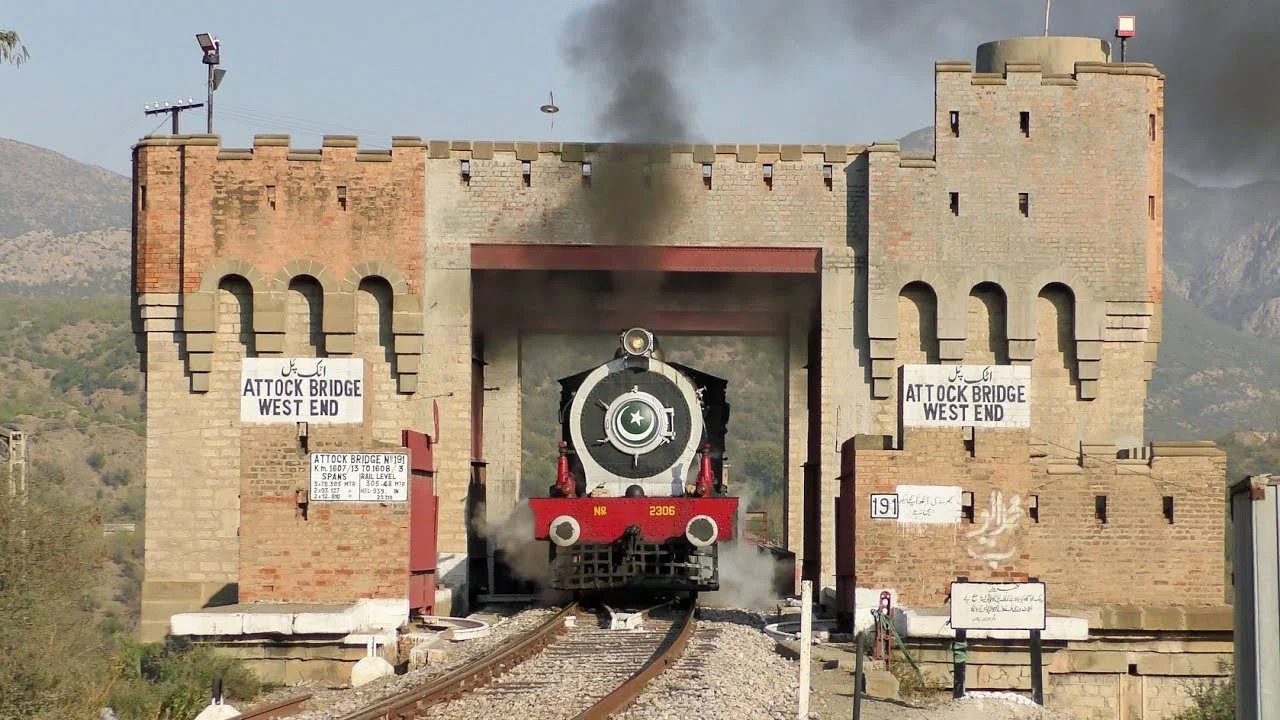
Attock city is located in the north of Punjab near Peshawar, and is a historical place. The city is full of vibes of the Mughals and British Eras. It has old religious places, including a Mandir, gurdwaras, and forts as well. Along with the richness of the historical significance, the city is blessed with natural beauty as well. Attock city is known for providing a large number of soldiers to the British Army before independence. Later to the Armed Forces of Pakistan, due to which, this city is also known as the ‘city of soldiers’.
Population
The population of Attock City has exceeded 19 lakhs. The people of Attock live a simple life and most of the population resides in villages. District Attock is an agricultural area and that’s why 70% of the population has adopted agriculture as a profession. The people living in the city areas are mainly Army officials, policemen, doctors, teachers, etc.
The people here are early-risers with male house members going to their workplace and children going to school. Female members of the house stay back and look after the house. However, there are also working women who usually are teachers and doctors.
The young generation of Attock city is mainly interested in playing Cricket and Football. There is an international-level cricket stadium known as ‘PCB Cricket Stadium, in which cricket is played at the district level. Other sports like Badminton, Hockey, Football, Neza Bazi, Bull Race, and Volleyball are also very famous. The people of Attock city like to play Kabaddi.
Language
The Urdu language is spoken and understood by all people of Attock City. The majority of the people living in the city can speak Punjabi and Pashto. The people who live in the cantonment are not generally the citizens of Attock City. Army officials posted there belong to different areas of the country. Hence, Urdu is the main language in the cantonment. The educated elite living in Attock City also understand and speak English.
Climate
Attock City has hot summers and cold winters. The northern part of Attock has more humidity and a more moderate climate relative to the southern part of the Attock district due to the higher altitude. Geographically, the district is mainly hills, plateaus, and plains.
Geographical Features and Location
Traveling from Rawalpindi to the district of Attock by GT road is almost 80 kilometers of distance. Attock city is located on the east bank of the Indus River. It is a beautiful city in Punjab province and covers six tehsils and connects borders with two provinces, KPK and Punjab.
Attock is the Eastern terminus of Kabul-Attock and a corridor to central Asia. Unlike modern highways, this corridor is not a work of engineering wonder but an act of nature as it was naturally carved through the Hindu Kush mountains.
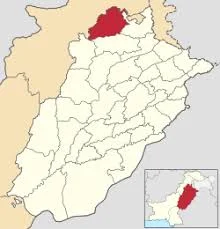
Historical Background
The Attock city was under the influence of Dara Awal or (Darab) of Iran in the 6th century AD. Raja Ambhi (Memphis) was the ruler of this place, and he ruled from River Jhelum to the River Sindh of Attock side in 627 AD after taking the control of Iran, king Sikandar managed the land of ancient Pakistan from Sindh to the Arabian sea and there are 29 states under the dominance of Iran.
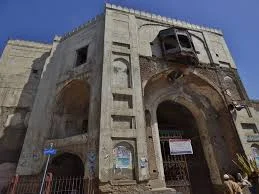
When Sikandar invaded India in 627 BC, Ambhi (Omphis), the ruler of Taxila, surrendered the city. After 4 years, Chandra Gupt Moriya defeated ruler Sulokas and added Taxila, Attock, Afghanistan, and the center of India into a place called Gandhara. At that time, Takshaseela and Charsada were the capitals of the Gandhara kingdom. The structural remains of Taxila include temples and forts. Ancient Attock was the center of Buddhism.
Gandhara was attacked by the people of the surrounding areas on their horses, leaving them with nothing in their hands. They destroyed and burned the religious places and homes. The people of Gandhara were left with no choice but to leave their homeland to save their lives. After that, the city was deserted for years. Attock city was initially founded by Emperor Akbar the Great, the grandson of Babar. Babar had recognized the worth and importance of this area in 1581 and built the famous Attock Fort.
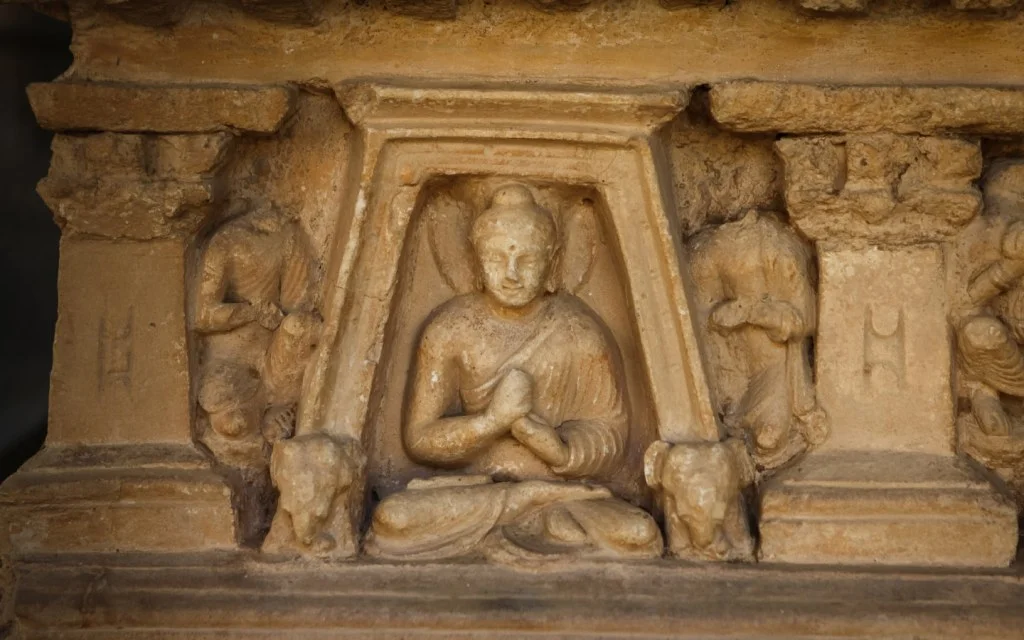
In the eighteenth century, the fall of the Mughal Empire saw the rise of Sikhs in Punjab and Durrani Afghans to the West. Attock City became a battleground between these two contending powers. So the British finally ended the feud by subjugating both Sikhs and Afghans. At the same time, the British also brought a rail line to the area and built the first permanent bridge in 1880 over the Indus River, and they established a new city called Campbellpur. After independence, the city was renamed Attock while the old city by the river is called Attock Khurd (Little Attock). Later, it was changed to Campbellpur after Sir Colin Campbell, Commander-in-Chief of British Forces, who rebuilt the city of Campbellpur.
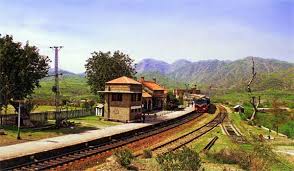
The British colonial rulers established Campbellpur Cantonment in 1858 and Campbellpur District was organized in 1904, by the division of Talagang Tehsil in the Jhelum District with the Pindigheb, Fateh Jang, and Attock tehsils from Rawalpindi District. Today the Attock district consists of six tehsils: Fateh Jang, Hazro, Hasan Abdal, Jand, and Pindi Gheb. The name ‘Attock’ was returned in 1978 because of the people’s preferences. Emperor Akbar gave the orders to build Attock Fort in 1581 and Attock Fort was completed in 1583 under the supervision of Khawaja Shamsuddin Khawafi, a Minister of Emperor Akbar.
In this period, Attock was called Attock Khurd and this name takes along from Sikh time to British times because in 1949 the British conquered this place from Sikh rulers and named this Cambellpur, this was renamed by the Pakistani government Attock City and it is still recognized by this name.
Culture of Attock City
There are several cultures in Attock: Punjabi, Pakhtun, Pothowhari, and Khapi, and there are two basic languages of Attock are Chachi and the other is Khapi. Most of the People living in the District, Attock belong to several casts and clans which are Gujjar, Janjua, Awan, Gakhar, Kashmiri, Khokhar, Pathan, Qureshi, Bhatti, Chauhan, Janjua Rajput, and Cheema.
Famous Food of Attock
The people here are foody and they eat many delicious food items but there is a famous dish called Katwa meat which is almost in every event and can be called a part of their traditional Katwa meat is prepared in big pottery bowls. The People of Attock city enjoy eating both traditional as well as continental food. In Attock, the variety of food ranges from traditional ‘Lahori Chargha’ to continental Chinese, and Italian cuisine, etc, and the People like to eat a dish called ‘saag’ and ‘makai ki roti’. Numerous Fast Food Chains are now being opened in Attock City including Pizza Hut, Loaded, and many others.
The Economic Landscape of Attock City
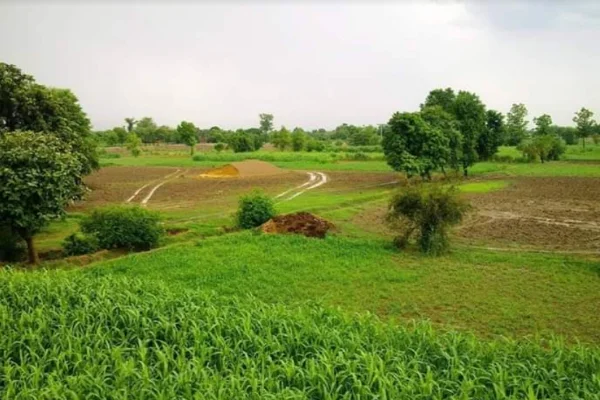
Mainly, the economy of Attock City is Agriculture-based, which includes maize, millet, wheat, peanuts, grams, and corn. Peanuts are the main cash crops of Attock City. District Attock has immensely fertile land, and inhabitants are still stuck to centuries-old irrigation practices. The views of the Kala Chitta mountains make the city more phenomenal.
Attock City holds another gem which is the Attock Khurd Railway Station, a British Style Railway Station that was conquered by the British from Sikhs. Around 85 – 90 % of the water in Attock is used for agricultural purposes. however, surface water supplies don’t meet the irrigation requirements so the city depends on rainfall mostly.
Tourism Attraction and Famous Places in Attock City
There are many options for tourism and historical places to visit in Attock city. Attock Fort, a Mughal era monument, Behram ki Baradari, Attock Khurd Railway Station, Attock Tomb, Begum Gerai, Kala Chitta Pahar, and many Temples and Gurudwaras. These places didn’t end here, there’s Ghoramar ki Abshar, Bagh Neelab, and Ghazi Brotha Lake, and many places like Kandhari ka Mizar, Punja Sahib, Lala Rukh ka Mizar are also in Attock City.
Attock Bridge:
The Attock Bridge is located between Attock Khurd and Khairabad Kund on the Indus River. It is known as “Old Attock Bridge”. This bridge is one of the most supreme strategic and commercial crossings on the Indus River between Punjab and Khyber Pakhtunkhwa. The old Attock Bridge has 2 levels and 5 spans. The upper level is used for railway traffic, and the lower level is used for road traffic. In 1979, a new bridge was started to be constructed, and road traffic was shifted there, and this new bridge is called the “New Attock Bridge”. Attock Bridge is still being used for railway traffic.
Attock Fort:
Constructed between 1581 and 1583 under Emperor Akbar’s rule, Attock Fort, supervised by Khawaja Shamsuddin Khawafi, guards the River Indus passage. Post-Partition, it became the Pakistan Army’s 7th division headquarters and later, under the SSG in 1956. Now, the SSG oversees the fort located 80km from Islamabad. Due to its military nature, public entry is restricted.
Makbara Attock:
The Makbara Attock is a tomb, ordered to be built by Khawaja Shamsuddin Khawafi, the minister and superintendent of the construction of the Mughal emperor Akbar. Originally, Khawaja had intended the tomb to be built for himself between 1581 and 1583. However, at the command of emperor Akbar, the two royal Hakims were buried there in 1597. Akbar himself visited the site after returning from one of his trips to Kashmir. The tomb complex also includes the Tomb of Lala Rukh, which is traditionally attributed to a Mughal princess.
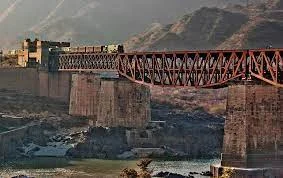
Attock Khurd Railway Station:
Attock Khurd Railway Station is a train station situated in Attock District, Punjab Province, Pakistan. It serves Attock City and is operated by Pakistan Railways. The station was established in 1886 by the North Western Railway and is located at an elevation of 547 feet (167 m).
Bagh Neelab & Ghora Mar Waterfall:
The Bagh Neelab Ghora Mar Waterfall is a hidden gem in Pakistan’s Punjab region. It’s a great spot for a day trip from Lahore and it is situated in a small village called Changa Manga. If you’re looking to escape the hustle and bustle of city life, this waterfall is the perfect place to relax and enjoy the natural beauty of Pakistan.
Conclusion
Attock is a city with great cultural, historical, and Islamic significance. It was inhabited during both the Mughal and British eras and has numerous cultural and religious sites throughout the district, including Mandirs, Gurudwaras, and other places of worship that hold prime significance for Sikhs and Hindus. The district is mainly comprised of hills, plateaus, and plains, with stunning views of the Kala Chitta mountains and the Attock Khurd Railway Station.



67 Comments
Olasxwidly
маркетплейс аккаунтов услуги по продаже аккаунтов
SDiozxswidly
продажа аккаунтов соцсетей маркетплейс аккаунтов
SDiozxswidly
маркетплейс аккаунтов соцсетей покупка аккаунтов
Droswidly
магазин аккаунтов социальных сетей маркетплейс аккаунтов
Josephwidly
заработок на аккаунтах купить аккаунт
RobertTig
гарантия при продаже аккаунтов купить аккаунт
Olivewidly
безопасная сделка аккаунтов продажа аккаунтов
Peterdaw
продать аккаунт продажа аккаунтов
RichardTen
платформа для покупки аккаунтов профиль с подписчиками
JamesCledo
аккаунты с балансом маркетплейс аккаунтов
Olivewidly
маркетплейс аккаунтов площадка для продажи аккаунтов
Bryantbeini
магазин аккаунтов платформа для покупки аккаунтов
RichardTen
биржа аккаунтов перепродажа аккаунтов
DavidNaisk
Secure Account Sales Secure Account Sales
JasonRah
Sell Account accountsmarketplacepro.com
MichaelMibra
Account Acquisition Account marketplace
WalterFlact
Secure Account Sales Secure Account Purchasing Platform
JaredSoals
Account Selling Service Verified Accounts for Sale
BrianCoaps
Website for Selling Accounts Sell Pre-made Account
Ronaldhex
Purchase Ready-Made Accounts Database of Accounts for Sale
ThomasGat
Accounts marketplace Account Acquisition
BruceCUBOW
Account Sale Sell Account
Williamsep
Account Exchange Service Profitable Account Sales
Ronaldhex
Website for Buying Accounts Sell Account
BrandonGuede
find accounts for sale account selling service
EdmundDeats
accounts market buy and sell accounts
RomeoGaH
accounts for sale account selling platform
DonaldSab
guaranteed accounts account market
Keithvet
account acquisition sell account
RobertGeasy
verified accounts for sale sell account
Hectorwem
account trading platform account market
CarlosMar
accounts for sale guaranteed accounts
Richardusero
account purchase account selling service
Carlosjeape
account market account market
Stephentraky
account trading platform online account store
Stevenslace
buy and sell accounts account exchange service
Clydedoulp
buy and sell accounts account sale
JohnnyDot
purchase ready-made accounts marketplace for ready-made accounts
ThomasPouff
ready-made accounts for sale account trading service
PhilipDib
sell pre-made account account buying platform
RandalOxilt
account acquisition account exchange service
RichardMouse
buy account best-social-accounts.org
Zacharymax
social media account marketplace account selling platform
Kevinjoipt
account acquisition account market
Raymondweiff
accounts for sale account trading platform
Thomasnussy
account acquisition accounts-market-soc.org
NathanKiz
buy pre-made account account market
BruceObere
accounts marketplace gaming account marketplace
Danielnot
account acquisition secure account purchasing platform
Jasonvon
buy and sell accounts accounts for sale
Geraldmox
guaranteed accounts account catalog
ThomasBeada
account trading account trading service
accounts-offer.org_Cousy
accounts market https://accounts-offer.org
accounts-marketplace.xyz_Cousy
profitable account sales https://accounts-marketplace.xyz
buy-best-accounts.org_Cousy
social media account marketplace https://buy-best-accounts.org/
social-accounts-marketplaces.live_Cousy
accounts marketplace https://social-accounts-marketplaces.live
accounts-marketplace.live_Cousy
account store https://accounts-marketplace.live/
social-accounts-marketplace.xyz_Cousy
account sale buy accounts
buy-accounts.space_Cousy
purchase ready-made accounts https://buy-accounts.space
buy-accounts-shop.pro_Cousy
secure account purchasing platform https://buy-accounts-shop.pro
buy-accounts.live_Cousy
marketplace for ready-made accounts https://buy-accounts.live
social-accounts-marketplace.live_Cousy
account marketplace accounts marketplace
accounts-marketplace.online_Cousy
gaming account marketplace https://accounts-marketplace.online/
accounts-marketplace-best.pro_Cousy
profitable account sales https://accounts-marketplace-best.pro
akkaunty-na-prodazhu.pro_Cousy
продать аккаунт https://akkaunty-na-prodazhu.pro/
rynok-akkauntov.top_Cousy
продажа аккаунтов https://rynok-akkauntov.top
kupit-akkaunt.xyz_Cousy
маркетплейс аккаунтов соцсетей маркетплейсов аккаунтов